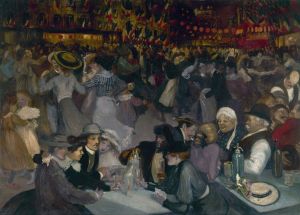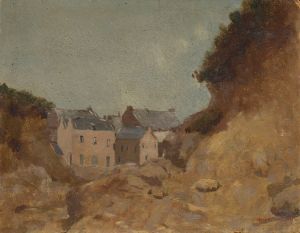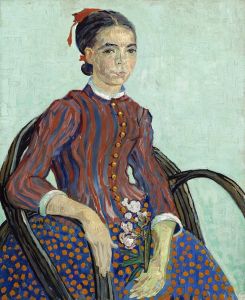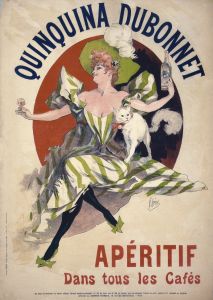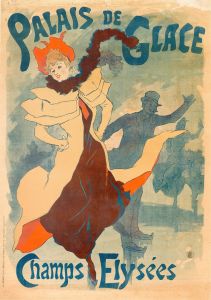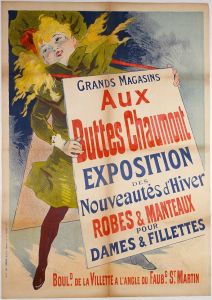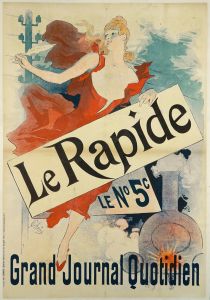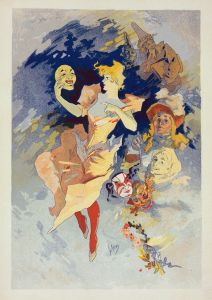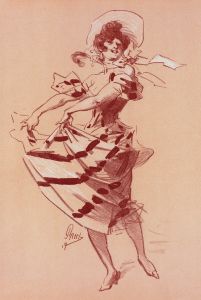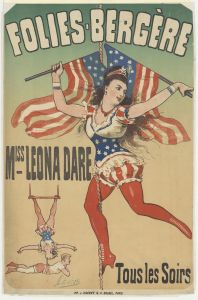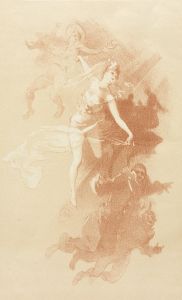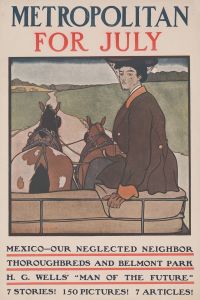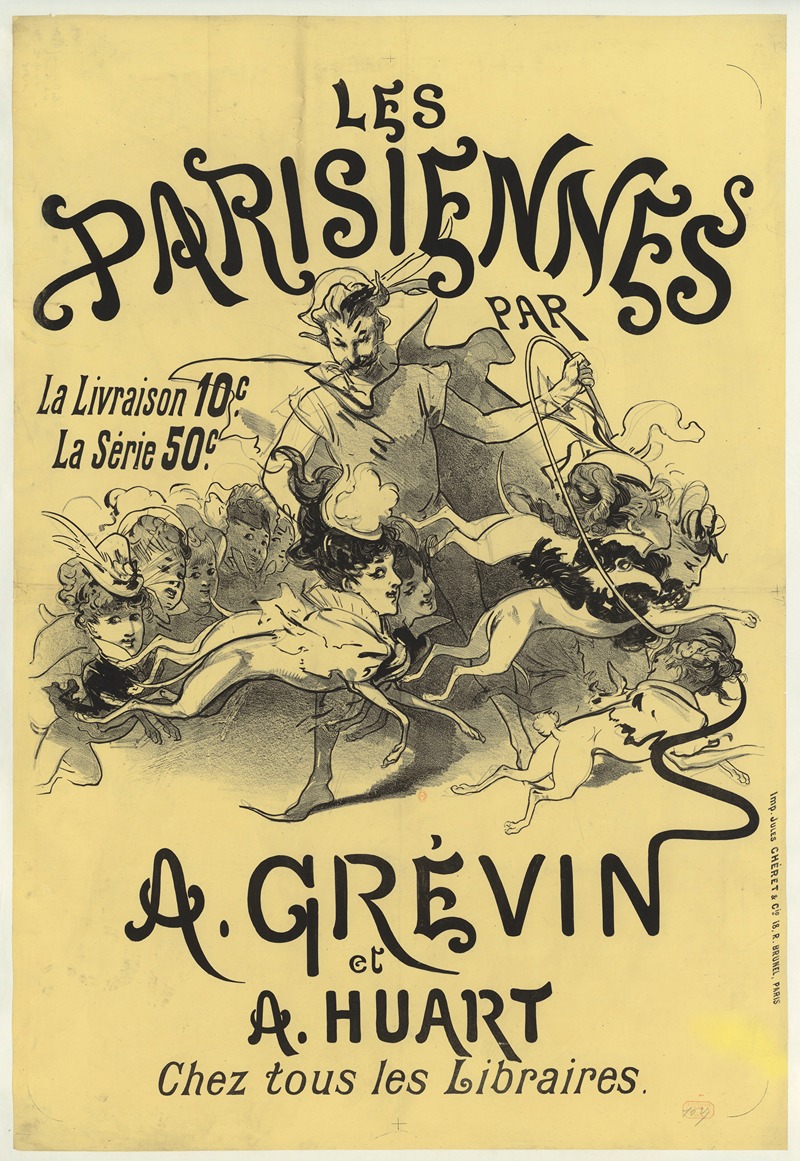
Les Parisiennes, la livraison 10 c… A. Grévin et A. Huart
A hand-painted replica of Jules Chéret’s masterpiece Les Parisiennes, la livraison 10 c… A. Grévin et A. Huart, meticulously crafted by professional artists to capture the true essence of the original. Each piece is created with museum-quality canvas and rare mineral pigments, carefully painted by experienced artists with delicate brushstrokes and rich, layered colors to perfectly recreate the texture of the original artwork. Unlike machine-printed reproductions, this hand-painted version brings the painting to life, infused with the artist’s emotions and skill in every stroke. Whether for personal collection or home decoration, it instantly elevates the artistic atmosphere of any space.
Jules Chéret (1836-1932) was a French painter and lithographer who is often referred to as the father of the modern poster. His work played a significant role in the development of poster art during the Belle Époque period in France. One of his notable works is "Les Parisiennes, la livraison 10 c… A. Grévin et A. Huart."
"Les Parisiennes" is a vibrant and colorful lithograph that showcases Chéret's distinctive style, characterized by dynamic compositions, bright colors, and lively figures. The artwork was created as a promotional piece for a publication or series, likely related to the Parisian lifestyle or entertainment, given the title and the context of Chéret's other works.
The lithograph features a group of elegantly dressed Parisian women, known as "Parisiennes," who were often depicted in Chéret's posters as symbols of modernity, fashion, and the lively spirit of Paris. These women are shown in various poses, engaging in social activities that reflect the vibrant culture of the city. The use of flowing lines and vivid colors captures the energy and movement of the scene, a hallmark of Chéret's style.
The mention of "la livraison 10 c… A. Grévin et A. Huart" suggests that the lithograph was part of a series or publication. Alfred Grévin was a well-known caricaturist and founder of the Musée Grévin, a wax museum in Paris. He was also involved in various publications and theatrical productions. Albert Huart, on the other hand, was a publisher and collaborator with Grévin. The inclusion of their names indicates that they were likely involved in the production or distribution of the series to which this lithograph belonged.
Chéret's work, including "Les Parisiennes," played a crucial role in the popularization of the poster as an art form. His innovative use of color lithography allowed for the mass production of posters that were both visually appealing and affordable. This democratization of art helped to bring high-quality visual culture to the streets of Paris, making art accessible to a broader audience.
In addition to their aesthetic appeal, Chéret's posters often served as advertisements for various products, events, and publications. They were displayed in public spaces, contributing to the vibrant visual landscape of the city. "Les Parisiennes" is a prime example of how Chéret's work captured the essence of Parisian life and culture during the late 19th century.
Overall, "Les Parisiennes, la livraison 10 c… A. Grévin et A. Huart" is a testament to Jules Chéret's mastery of the lithographic medium and his ability to encapsulate the spirit of an era through his art. The collaboration with figures like Alfred Grévin and Albert Huart highlights the interconnected nature of the artistic and cultural scene in Paris at the time.





